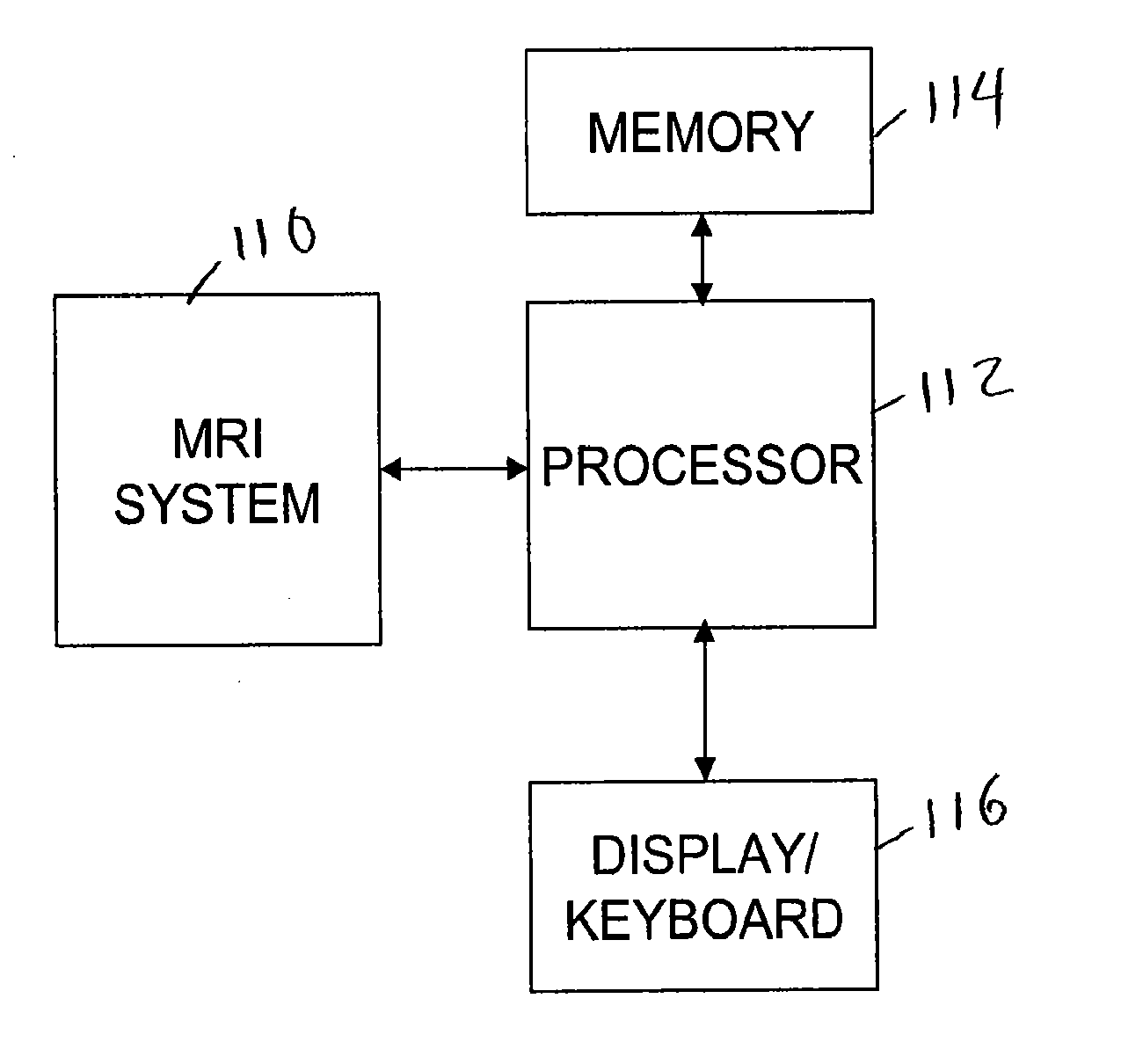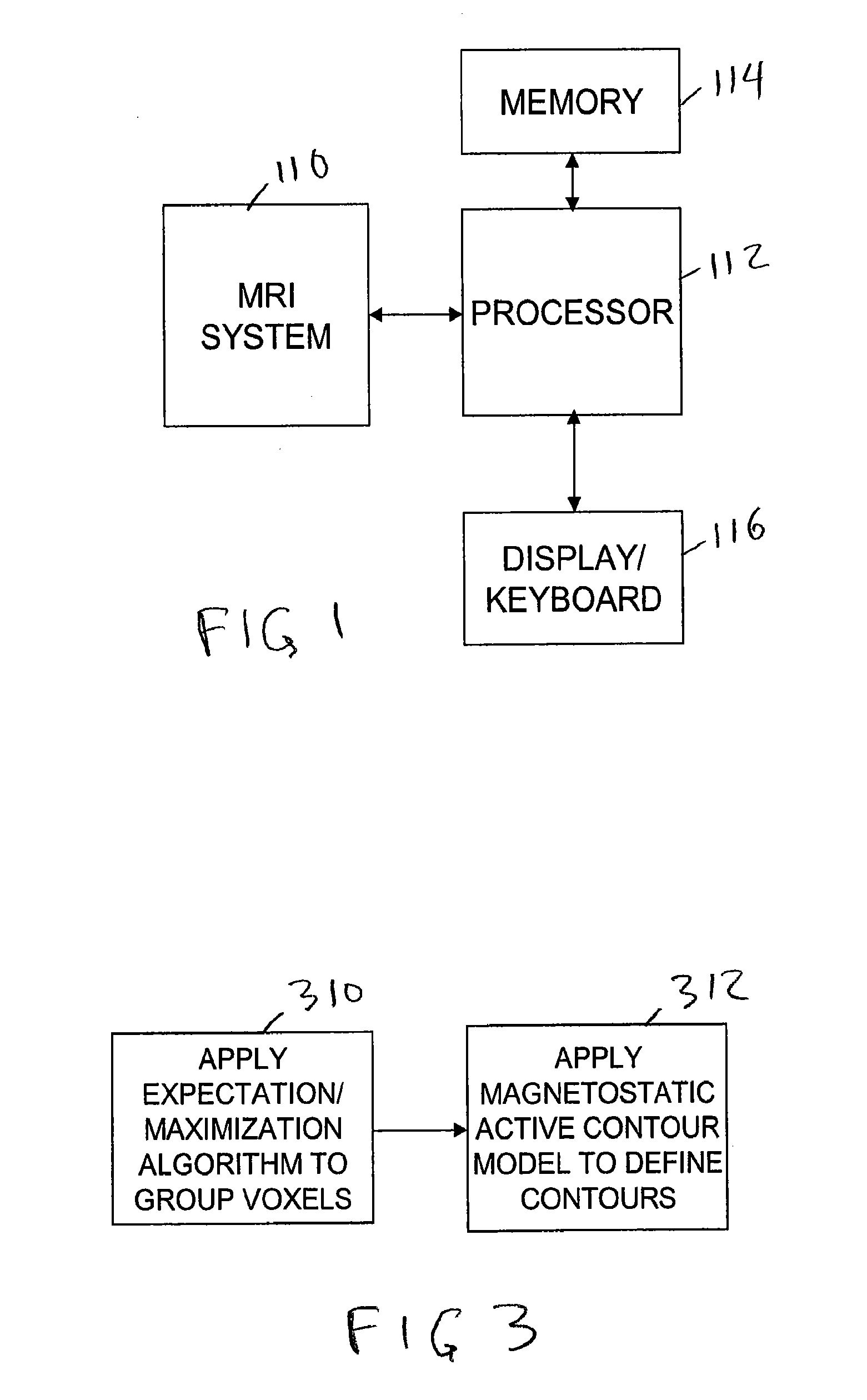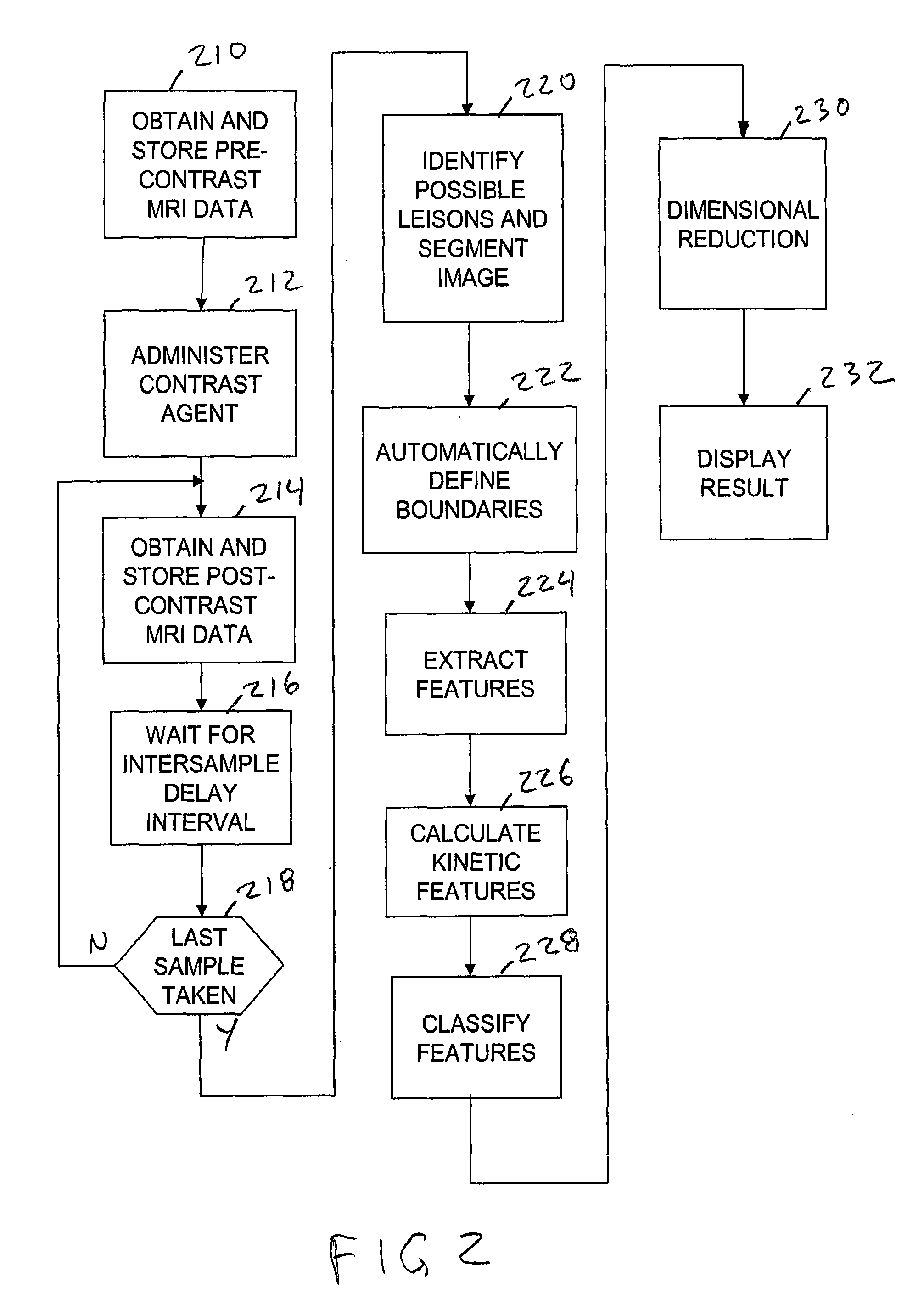System and method for automated segmentation, characterization, and classification of possibly malignant lesions and stratification of malignant tumors
a technology of automatic segmentation and classification, applied in the field of system and method for automated segmentation, characterization, classification and classification of possibly malignant lesions and malignant tumors, can solve the problems of ineffective targeted therapies and less effective x-ray mammography in tn breast cancer screening than dce-mri
- Summary
- Abstract
- Description
- Claims
- Application Information
AI Technical Summary
Benefits of technology
Problems solved by technology
Method used
Image
Examples
Embodiment Construction
[0008]While the embodiments of the subject invention described below concern the detection of breast tumors, it is contemplated that they may be applied generally to detecting and classifying possibly malignant lesions in other parts of the body based on DCE-MRI data. In addition, the invention may be applied to detect and classify non-malignant regions of interest (ROI) in a body.
[0009]Due to the clinical nature of TN tumors, however, accurate and consistent identification of these specific tumors is desirable, and a computer-aided diagnosis (CAD) system that could detect the TN radiologic phenotype would assist clinicians in therapeutic decision-making, monitoring therapy response, and increasing our understanding of this aggressive breast cancer subtype.
[0010]Breast DCE-MRI is performed by first injecting gadolinium diethylenetriamine-pentaacid (Gd-DTPA) into the patient's bloodstream and concurrently acquiring MRI images of the breast. Since malignant lesions tend to grow leaky ...
PUM
 Login to View More
Login to View More Abstract
Description
Claims
Application Information
 Login to View More
Login to View More - R&D
- Intellectual Property
- Life Sciences
- Materials
- Tech Scout
- Unparalleled Data Quality
- Higher Quality Content
- 60% Fewer Hallucinations
Browse by: Latest US Patents, China's latest patents, Technical Efficacy Thesaurus, Application Domain, Technology Topic, Popular Technical Reports.
© 2025 PatSnap. All rights reserved.Legal|Privacy policy|Modern Slavery Act Transparency Statement|Sitemap|About US| Contact US: help@patsnap.com



